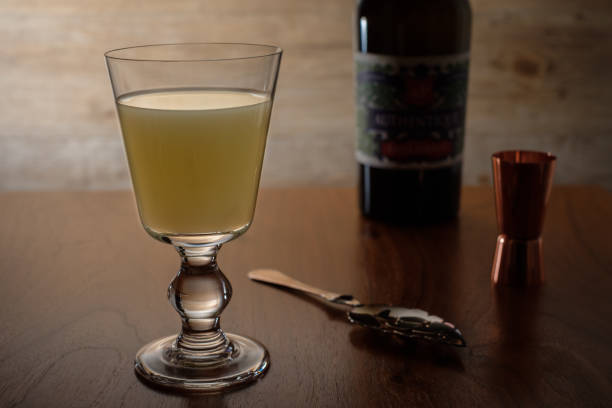An Overview of Armagnac
One of France’s most illustrious and ancient brandies, Armagnac has a distinct production method and a rich history that distinguish it from its more well-known cousin, Cognac. With origins dating back to the 14th century, Armagnac is a popular beverage that has been produced in the Gascony area of southwest France for centuries. Armagnac is usually distilled once in a continuous still, preserving more of the fruit’s inherent qualities and adding a distinct, powerful taste, in contrast to Cognac, which is double-distilled. This article explores the intriguing world of Armagnac, including its production method, history, distinctive terroir of the Gascony region, and rising connoisseur appeal.
The Background of Armagnac
Tradition and a sense of place are deeply ingrained in Armagnac’s heritage. Ever since it was first recorded in the early 14th century, Armagnac has been an integral part of Gascony culture. Before becoming a beloved spirit, it was first prized for its therapeutic qualities. The regions of Haut-Armagnac, Ténarèze, and Bas-Armagnac all had a major impact on the development of Armagnac and contributed to its unique qualities
With the development of production techniques throughout the ages, Armagnac became a luxury brandy that was appreciated by the French nobility and other elites by the 19th century. Because of its smaller production volume and lesser-known position outside of France, Armagnac frequently suffered from being overshadowed by Cognac despite its higher quality and historical significance.
The Special Terrain of France
A major factor in what makes Armagnac unique is the terroir of Gascony. The region’s temperate climate and varied soil types, which range from sandy and siliceous to clay-limestone, make it the perfect place to grow the grape varieties required to make Armagnac. Baco, Ugni Blanc, Colombard, and Folle Blanche are the main grapes used, and each one gives the finished product a distinct flavor and scent. Bas-Armagnac is regarded as the center of Armagnac production because of its complex, fruity, and light spirits.
The central region of Ténarèze is known for its full-bodied and robust Armagnacs, whereas Haut-Armagnac, which produces less Armagnac overall, is renowned for its unique, frequently flowery characteristics. Because of its diverse terroir, Armagnac has a distinctive flavor profile that is representative of its particular Gascony provenance.
The Armagnac Production Process
Traditional and careful, the production process of Armagnac is based on centuries-old techniques that have been handed down through the generations. The first step in the process is harvesting the grapes, which are subsequently fermented to produce wine. In contrast to Cognac, Armagnac is usually distilled in an Armagnac alembic, which is a continuous still. By using a single, slower distillation process, this technique helps preserve more of the unique tastes and aromatic compounds found in grapes.
After that, the resulting spirit, called eau-de-vie, is matured for a longer period of time in oak barrels, where it gains complexity and richness. The aging process is important because the wood’s contact with the spirit brings out tastes like spice, vanilla, and caramel while softening the edges of the spirit. Some of the best vintages of armagnac are over 50 years old, and the liquor is frequently matured for several decades.
The Types and Aging of Armagnac
Armagnac comes in a number of types that are divided into groups based on the way it is blended and aged. VS (Very Special) is the designation for the youngest Armagnacs, which must be aged for at least two years; VSOP (Very Superior Old Pale) must be aged for at least four years. The minimum age required for XO (Extra Old) and Hors d’Age Armagnacs is ten years, though many manufacturers go much beyond this.
Furthermore, because they are limited to a single harvest, vintage Armagnacs are highly prized for their distinctive representations of the region and conditions of that particular year. These vintage bottles have an unmatched depth and complexity because they have frequently been aged for decades. Producers can establish a unified house style by mixing various aged spirits, and vintage Armagnacs highlight the distinctive qualities of a specific production year.
The Resurgence and Adoration of Armagnac
Armagnac has seen a resurgence recently, becoming more and more well-liked among collectors and spirits aficionados across the globe. There are a number of reasons for this comeback, such as the increased demand for artisanal and craft spirits and the return of curiosity about the distinctive small-batch production techniques that make Armagnac. Its intricate flavors, lengthy history, and the skill with which it was produced entice connoisseurs.
Also contributing to Armagnac’s increased appeal is the spirits industry’s premiumization trend, which is seeing customers becoming more open to trying and purchasing high-end, lesser-known brands. Exports have increased as a result of this resurgence of interest, especially to markets in Asia and the United States where discriminating consumers are ready to try out novel and outstanding spirits.
Drinking and Snacking on Armagnac
To truly appreciate Armagnac’s complex flavors and fragrances, one must be able to taste and savor it. Sipping Armagnac slowly and letting it warm up a little in the hand to reveal its aroma is the ideal way to enjoy it. The flavor profile of armagnac varies with age, from rich, spicy, and woody in older, more mature kinds to fruity and flowery in younger expressions.
Dried fruits, nuts, vanilla, caramel, and spices like nutmeg and cinnamon are typical flavor characteristics. It is usually drunk neat, in a glass shaped like a tulip, which intensifies the scents. But armagnac can also be cleverly mixed into cocktails, providing a refined substitute for other spirits. Foods like cheeses, pâté, or dark chocolate pair well with Armagnac to bring out its nuances and provide a delicious culinary experience.
In summary
In conclusion, Armagnac offers a distinctive and extremely fulfilling experience for individuals who value great spirits. It symbolizes a deep legacy of French workmanship and history. Its remarkable terroir of Gascony, together with its lengthy history and distinctive manufacturing method, all add to its particular character and complexity.
Even though Cognac frequently takes center stage, Armagnac is distinguished by its handcrafted excellence and the commitment of its producers. Armagnac’s popularity keeps rising as more people come to appreciate its depth and richness, guaranteeing that this iconic brandy will always be treasured and honored. Armagnac is a fascinating trip into the core of one of France’s most renowned and beloved beverages, appealing to both seasoned aficionados and interested beginners.




